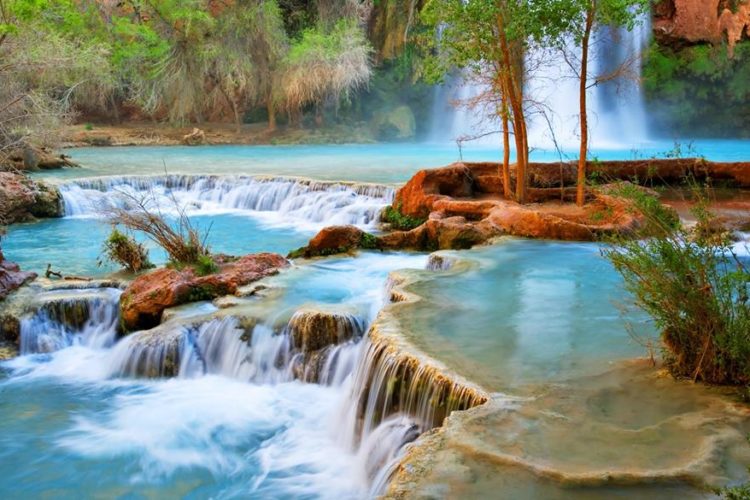Mercury falls of the Starlit Shelflands
A gorgeous natural gem, filled with unique metalbased species!
This particular location is hidden from humans not to conceal Autumn life but for their own safety. As even the purest, richest of mercury even when diluted with natural gallium can still be hazardous to human health. The Shelflands cover a few mountainous areas all of which earned their name from the shelf-like structure of the waterfalls which cover every inch. The average hight of a shelf is two to three meters tall but each pool varies in size, depth and temperature. Each mountain is actually more of a slow bubbling volcano, which keeps the waters warm and uses the pressure to push the liquid that had soaked into the mountain back out the crater at the top. Rather then water flowing down the falls, the Starlit Shelflands are drenched in the thinnest and cleanest mercury in the world. Unlike in humans, mercury has benefits to many forms of life such as reptiles, and some metal based mosses and plant life. As the Shelflands are unique in their warm temperatures and purity of mercury, they are one of the most biodiverse ecosystems in the world with hundreds of endemic species. The "Starlit" comes from the metallic sheen that covers almost everything in the Shelflands and on a clear night, the starlight is reflected off of the swirling mercury and shimmering moss to create one of the most gorgeous views in the world.
Fauna & Flora
Mosses
The most common moss in the shelflands known as steel wool due to looking uncannily like the human dish washing equipment. This grows on clumps of rusting aluminum with it's stringy roots dipping a pool. It is renowned for its incredibly soft texture and gorgeous minuscule purple flowers that cover it in winter.Pool dwellers
One of the most commonly seen pool dwellers are called clipalins. Shaped slightly like a squirrel but with a flat tail, tiny iridescent scales and octopus like suction pads on each finger, these creatures feed off of any water bugs they can find and the helium leaves of the qweice bush. As a defense, a clipalin will spit hot mercury when provoked but spend most of their days climbing up or sliding down the pools. At night they crawl down to the bottom of their home pool and sleep.
Type
Mountain Range
Remove these ads. Join the Worldbuilders Guild









Comments